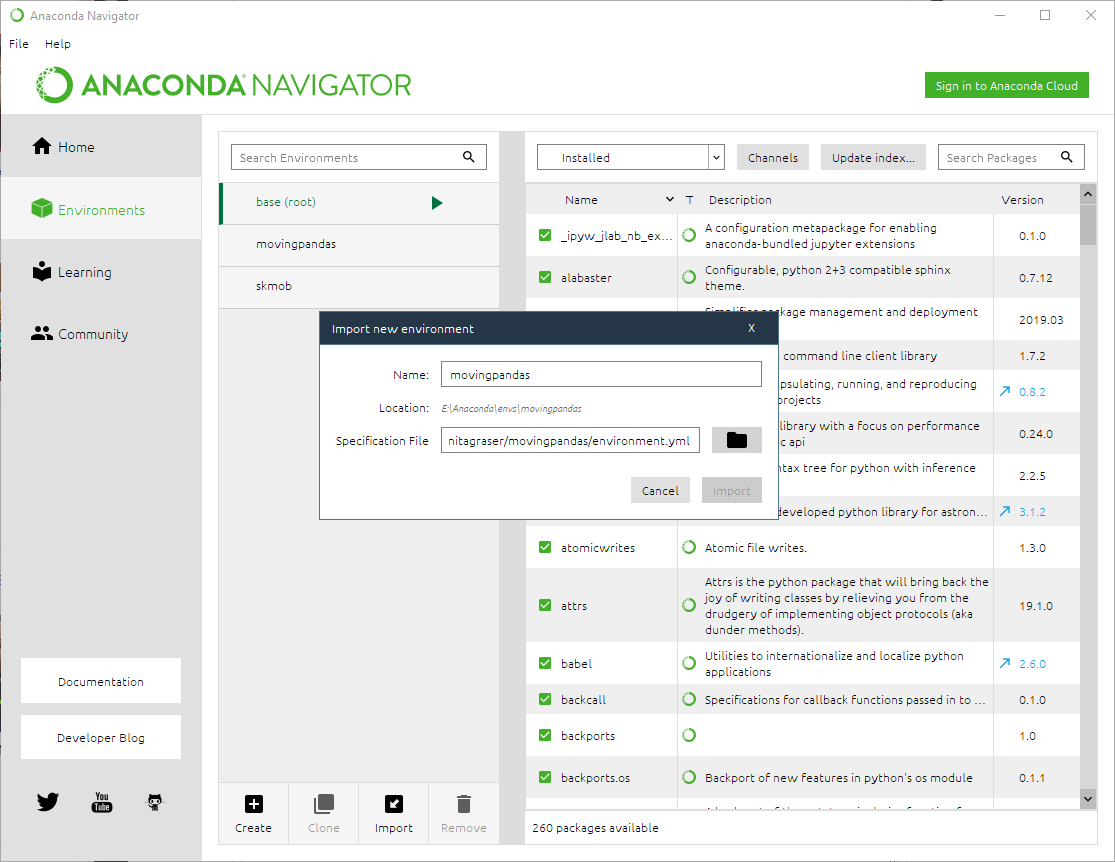Implementation of Trajectory classes and functions built on top of GeoPandas
Project description
MovingPandas
MovingPandas implements a Trajectory class and corresponding methods based on GeoPandas.
You can try MovingPandas in a MyBinder notebook - no installation required:
Introduction
Common Simple Features-based data models where trajectories consist of geometries with timestamps can be readily implemented in GIS environments, but they suffer from a lack of support for the temporal dimension, such as functions for duration and speed.
In stark contrast, the Pandas data analysis library has been developed with a strong focus on time series. By choosing Pandas data structures (1D series and 2D DataFrames) as a base for MovingPandas, we gain access to the library’s built-in functionality, including: flexible indexing on timestamps and other column types; memory-efficient sparse data structures for data that is mostly missing or mostly constant; an integrated ‘group by’ engine for aggregating and transforming datasets, and moving window statistics (rolling mean, rolling standard deviation, etc.).
GeoPandas extends the data types that can be used in Pandas DataFrames, thus creating GeoDataFrames. Geometric operations on these spatial data types are performed by Shapely. Geopandas further depends on Fiona for file access (which enables direct reading of GeoDataFrames from common spatial file formats, such as GeoPackage or Shapefile), and descartes and matplotlib for plotting.
MovingPandas uses the following terminology. A trajectory is, or more correctly has, a time-ordered series of geometries. These geometries and associated attributes are stored in a GeoDataFrame df. Furthermore, a trajectory can have a parent trajectory and can itself be the parent of successive trajectories. Raw unsegmented streams of movement data, as well as semantically meaningful subsections or other subsections, can therefore be represented as trajectories. Depending on the use case, the trajectory object can access a point-based or a line-based representation of its data. (Source: [0])
Installation
Use the following steps to run the notebooks locally on your machine:
- Install Anaconda
- Clone the movingpandas repository
- In Anaconda Navigator | Environments | Import select the movingpandas environment.yml from the cloned directory:
- Wait until the environment is ready, then change to the Home tab and install Jupyter notebooks into the movingpandas environment
- Launch Jupyter notebooks and navigate to the cloned directory to execute them
- Now you can run the notebooks, experiment with the code and adjust them to your own data
Publications
[0] Graser, A. (2019). MovingPandas: Efficient Structures for Movement Data in Python. GI_Forum ‒ Journal of Geographic Information Science 2019, 1-2019, 54-68. doi:10.1553/giscience2019_01_s54. URL: https://www.austriaca.at/rootcollection?arp=0x003aba2b
Project details
Release history Release notifications | RSS feed
Download files
Download the file for your platform. If you're not sure which to choose, learn more about installing packages.
Source Distribution
Built Distribution
Hashes for movingpandas-0.1.dev1-py3-none-any.whl
| Algorithm | Hash digest | |
|---|---|---|
| SHA256 | 483eadec7377d4230199112cc0203c389fcdd814c441a7fd973d36064d446634 |
|
| MD5 | 63aede952f58f5acf1c6a0c30b5c33f5 |
|
| BLAKE2b-256 | 86b71815e4134f02e394e48f0abec7305932bf659a7bde8678d58799dc09e539 |













